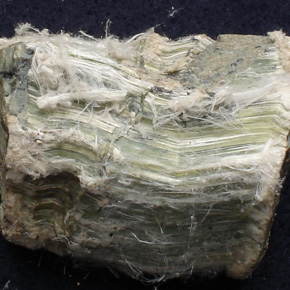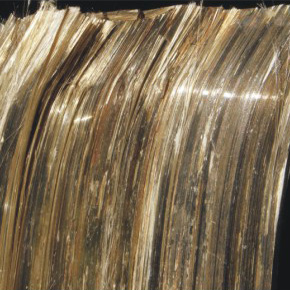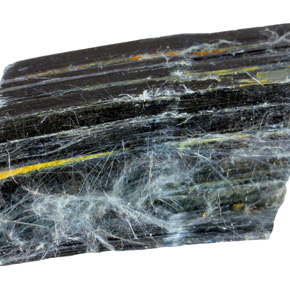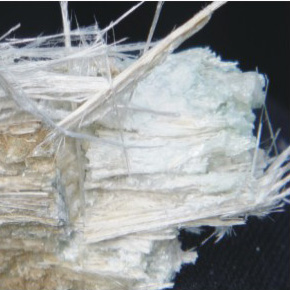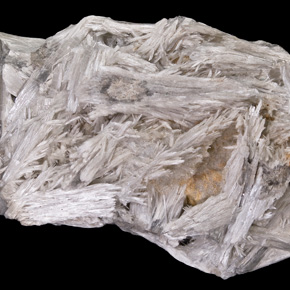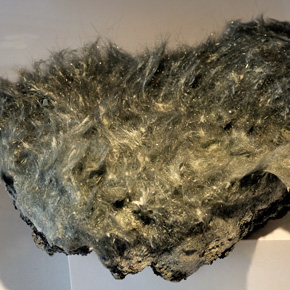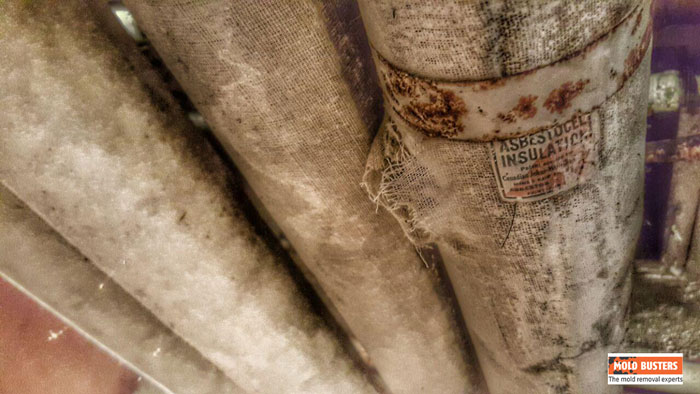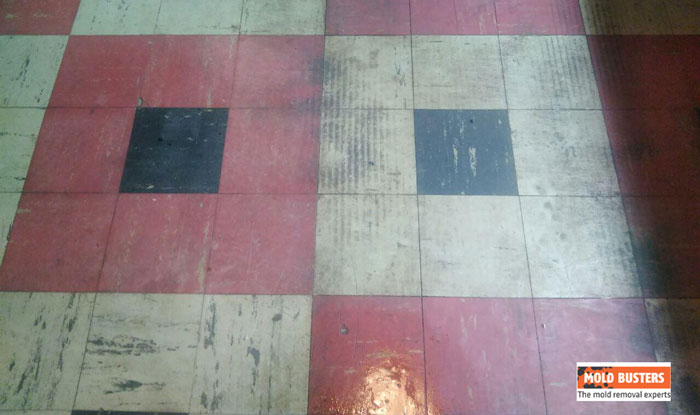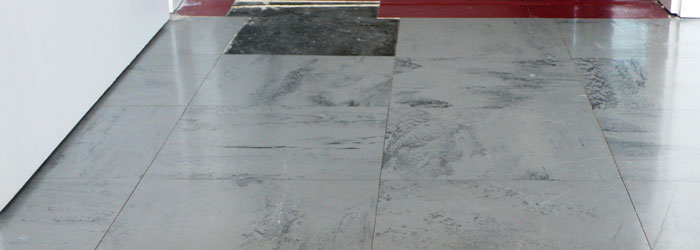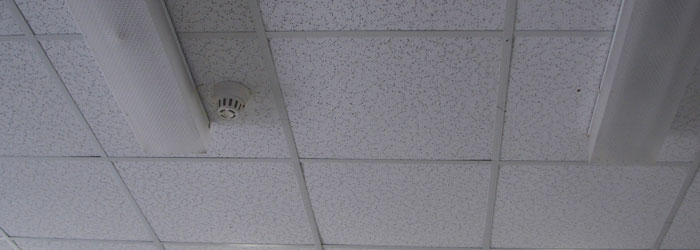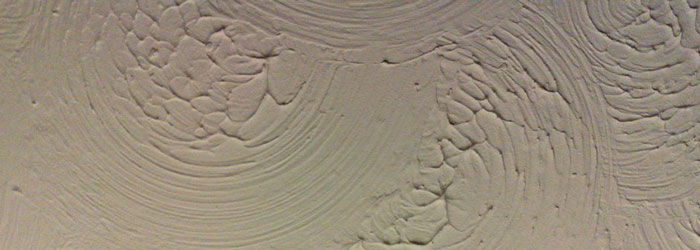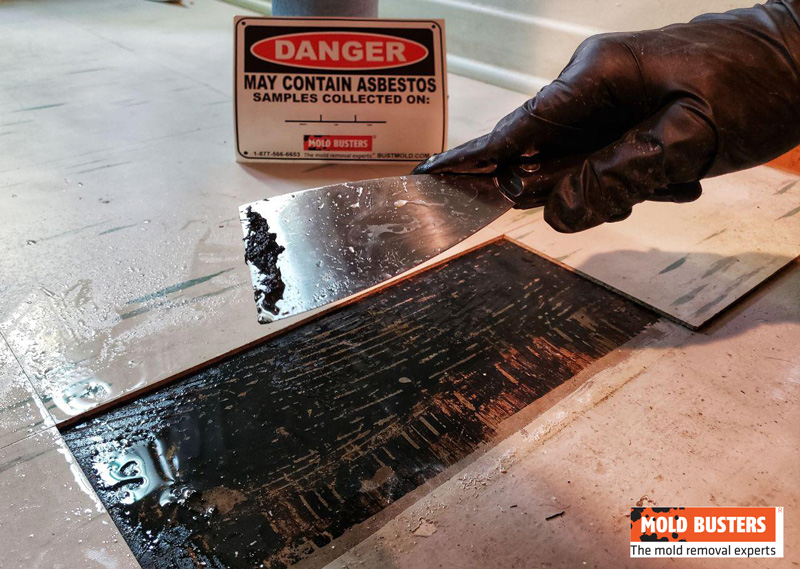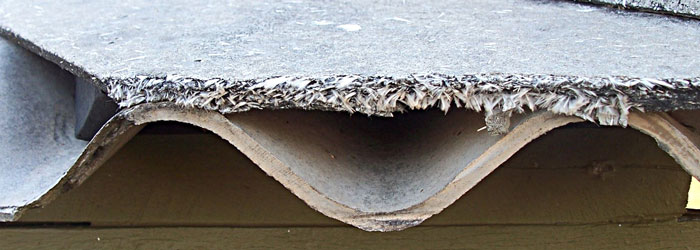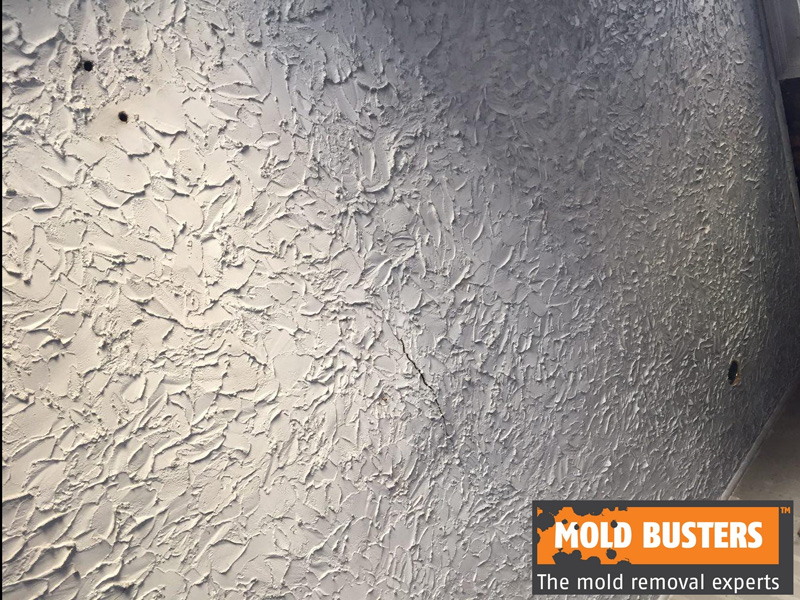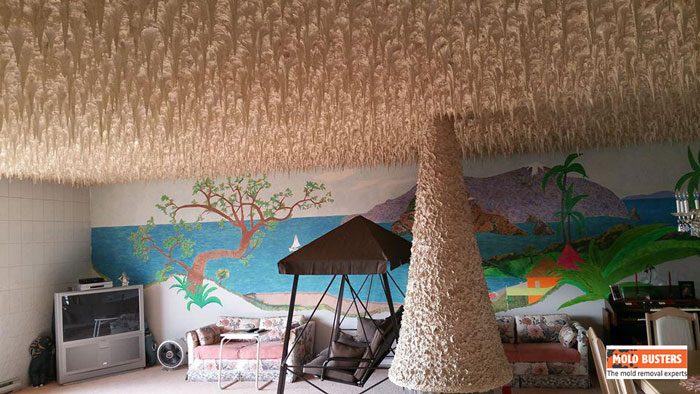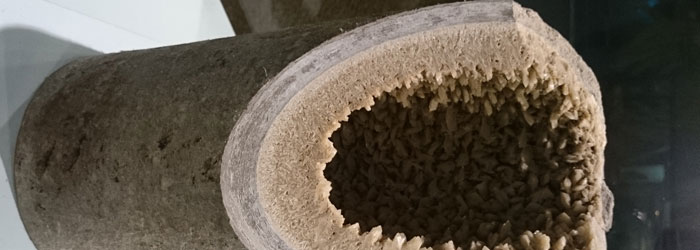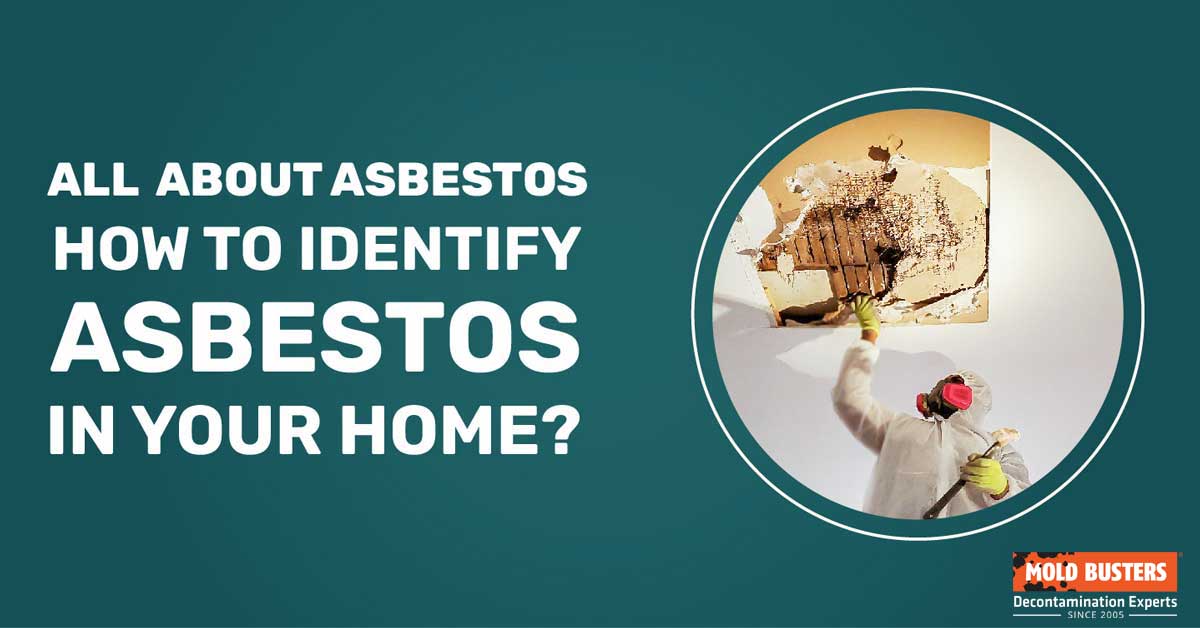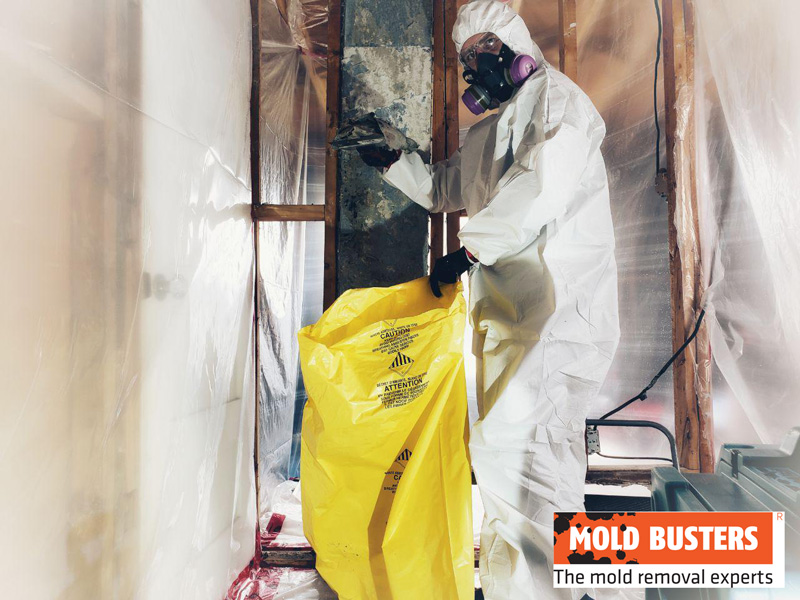What is Asbestos & How Does it Look Like
Excited about the prospect of buying a home or other property? We don’t blame you, but there are precautions you should take in your investment adventure. Among other inspections, professional asbestos testing is of critical importance. Getting this taken care of from the outset can save you a lot in terms of health risks, stress, and expenses later!
Many of us know about the health hazards in regards to asbestos, but may be unaware that the outright ban happened in Canada as of December 30th in 2018. This means that homes or even commercial developments may still contain asbestos within its building materials, but the import, sale and use of the asbestos materials or products containing it are prohibited.
- What are the six types of asbestos?
- What is asbestos?
- Why was asbestos used?
- How is asbestos being used today?
- How can you identify asbestos?
- The Asbestos-Containing Material Hazard Scale
- What is asbestos abatement?
- Why is asbestos dangerous?
- How can a person get exposed to asbestos?
- How can you dispose of asbestos – DIY?
- When was asbestos banned in Canada?
What are the six types of asbestos?
Another surprising fact is there are actually six different types of asbestos. They are:
- Chrysotile: “White Asbestos” mainly found in roofs, ceilings, insulations, and floors. This type of asbestos is found 95% in buildings and was mined in Quebec and Vermont.
- Amosite: “Brown Asbestos” commonly found in cement sheets, insulation, tiles, and roofing materials. It does not absorb in water easily. This type of asbestos is found 5% in buildings and this is mined in South Africa.
- Crocidolite: “Blue Asbestos” common in insulation, ceilings tiles, and cement products. It does not absorb in water readily.
- Anthophyllite: This is a amphibole mineral and can be categorized as fibrous which classifies them as asbestos.
- Tremolite: Contamination of vermiculite insulation, talc, paints, sealants and roofing materials.
- Actinolite: Mainly found in insulation, gardening and fireproofing materials.
What is most commonly used and most dangerous type of Asbestos?
Out of these six variations Chrysotile is the most commonly used in housing whereas Crocidolite is the most dangerous to exposure.
Within this article I will outline the history of this material, why asbestos is a toxic health risk and what steps you can take to protect yourself.
What is asbestos?
Asbestos can be defined as a naturally occurring mineral made up of thin, tightly packed fibers. It is a unique mineral that has the ability to resist heat, fire and electricity. The mineral is derived from metamorphic rock and naturally occurs in every continent around the world (1).
What is the color of asbestos?
Various types of asbestos are different colors, however the majority are a grey, dull green or white color.
- Chrysotile the most popular type of asbestos is long, white, and curly.
- Amosite is described as long straight brown fibres.
- Crocidolite is a less used mineral and is very similar to amosite and is a blue or green colour.
What is friable and non-friable asbestos?
Friable asbestos can be easily reduced to power by the touch of the hand when it’s dry. Friable is found in sprays, adhesives, and insulation.
Non-friable asbestos refers to firmly bound to the matrix of the material. This type is mainly found in cements and vinyl floor tiling.
Why was asbestos used?
The main appeal for using asbestos was it was very cheap to produce, and provided a great deal of strength without additional weight.
During the Industrial Revolution It was used as an insulator for steam engines, boilers, turbines, ovens and electric generators.
At the turn of the 20th century, it was used as a building material for homes, and buildings due to its malleability and durability.
When was asbestos used?
The mineral of asbestos was used since the stone ages, but the commercial mining of asbestos started during the Industrial Revolution in the late 1800s. In 1874, The first commercial mine opened in Quebec. In the 1930s to the 1970s asbestos was mainly used for insulation of homes, schools and commercial buildings (2).
The links between asbestos and cancer or other illnesses was documented as early as the late 1890s by a doctor in Australia who documented pulmonary trouble in a patient who inhaled asbestos dust. Into the 1970s, there was pressure from contract and construction workers around the world when the health risks became too severe due to exposure to asbestos. In 1977, the Environmental Protection Agency (EPA) in the United States passed legislation to limit the amount of asbestos exposure.
In 2005 many industrial countries banned the use of asbestos including, New Zealand, Australia and the United Kingdom. Despite pressure from workers there still has yet to be a full ban in the United States.
Canada officially banned asbestos as well, on 30th of December, 2018.
How is asbestos being used today?
Luckily most uses of asbestos has been fazed out or banned within newer buildings and materials. However, asbestos may be used in insulation, roofing, water supply lines, gaskets, and pads for automobiles. The majority of asbestos is used today in fibre cement boards.
What is asbestos used for?
You will see asbestos within buildings and houses built before the 1990s in commercial ceiling tiles, floor tiles, roof shingles, insulation, pipe cement, and joint compound used on seams between pieces of sheetrock.
- Insulation: Asbestos was often used in insulation for electric insulation from hot plate wiring within homes built before the 1990s particularly in the early 1900s to the 1950s. It would often be mixed with cement and woven into fabric or mats. Asbestos is most commonly found in insulation around boilers, pipes, ducts, sheeting, and fireplaces.
Asbestos Pipe Wrap Insulation (Hot Water Pipes) - Tiling: Many different materials that tilers used including vinyl, vinyl sheet rubber or asphalt floor tiles may have traces of asbestos in the material or within the glue backing. Asbestos was only banned in tile floors in the 1980s.
Asbestos 9×9 Floor Tile
What are common tile types that use asbestos?
Here are some of the most common tile types that use asbestos:
- Vinyl Tiles: From the 1920s onwards vinyl and asbestos was often mixed together due it being inexpensive and resistant. The typical tile sizes that contained asbestos were 6”x6”, 9”x9” and in some cases 12”x”12”.
- Acoustic Ceiling Tiles: This was the most popular ceiling tile mixed with asbestos during the 1940s to the 1990s. It’s also known as the drop ceiling tile.
- Vinyl Wallpaper: This material with adhesive, glue, backing or mastic may contain asbestos.
- Asphalt Tile: Nine by nine inch tiles made prior to the 1990s most likely were made from asbestos fibres.
- Glue/Black Asbestos Mastic: Adhesives for tile or linoleum flooring often contained asbestos.
- Cement: Asbestos would be used to reinforce cement sheets and were often used for roof shingles. They were appealing post-WW2 because they were cheap and highly resistant to fires. In addition in the 1930s to the 1950s asbestos was mixed with cement for roads.
What are common cement types that use asbestos?
Here are some of the most common cement types that use asbestos:
- Corrugated asbestos sheets: Fibrous cement created an affordable alternative to metal panels. These sheets were mainly used as siding and roofing on farms and factories.
- Asbestos flatsheet: This flat sheet cement was much more water resistant than drywall and it found its way in the interior of homes as well as businesses underment for flooring and walls.
- Asbestos lumber: This is also known as asbestos cement sheathing, which was marketed as a superior option to wood. This is a nonconductive product that was highly resistant to fire, yet soft enough to be worked similar to lumber. This was mainly used for siding and roof shingles.
- Wall Coating: Asbestos was commonly used in drywall as well as mixed for textured paints for walls, however this practice was banned by the EPA in the United States in the 1970s. This also includes popcorn ceiling texture that was often seen within older homes prior to the 1980s.
- Spray Coatings: This was sometimes called limpet or flock and were most popularly used in the 1950s to the 1970s. When the spray was added for insulation purposes it looked like popcorn ceiling, plaster or a white-grey rocky surface on a structure. Because this form of insulation is the most easy to damage and it contains 80% of asbestos, it is the most dangerous to have within a building or home.
Decorative Plaster Asbestos
What did asbestos pipe insulation look like?
Piping asbestos insulation product appears most often like gray-white corrugated paper, but it might also appear as like cement paste or plaster on pipe valves, elbows or other components.
What does loose insulation look like?
There are a couple different types of insulation and they can contain different properties. It could have a grey-brown color, but it can also look like loose a pellet like material. In addition it could look like an accordion like texture, which can result in the particles puffing up.
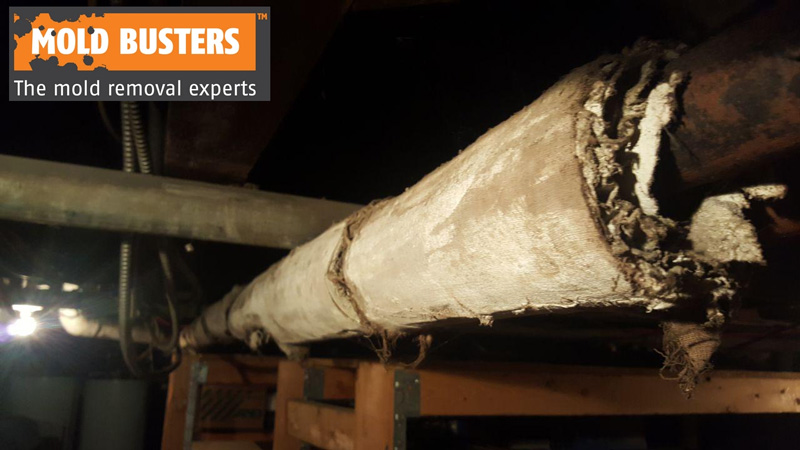
What does insulation look like in an attic?
A major danger with asbestos insulation is vermiculite attic insulation. This kind of insulation is loose-filled into joints and walls. Vermiculite is a pellet like material often used in gardening and is mixed with asbestos particularly in attics.
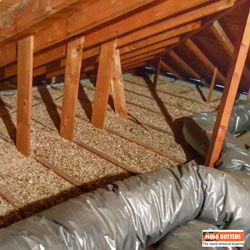
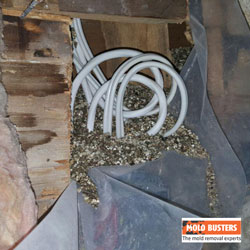
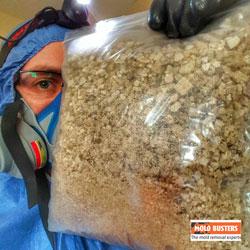
There are some physical characteristics to consider when examining your attic for asbestos:
- The insulation may be a gray-brown or silver brown color.
- The insulation again may have an accordion-like appearance that puffs up.
- The insulation can lay flat and firm against the joint cavities.
What are Asbestos Insulation Board (AIB) products and how to identify them?
Asbestos insulating board was primarily used for fireproofing, however they can also be used for partition walls, fireproof panels in fire doors, ceiling tiles, panels below windows, soffits, heat registers and lift shafting linings.
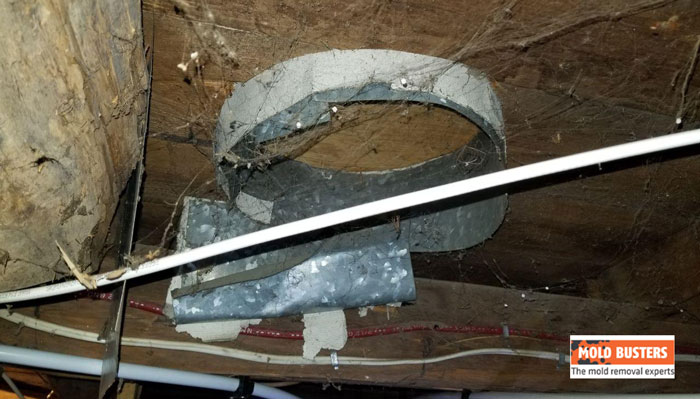
It is difficult to identify non-asbestos materials versus asbestos materials, since the materials are typical boards, plasterboards, and ceiling tiles. It can be described as cementitious, soft, paper-like and can be easily cut with a knife. This is an example of why it is important to have your materials tested by a trained professional.
How can you identify asbestos?
When questioning whether or not your home is built with asbestos there are several steps you can take to identify the product:
- Determine when the building was built. A building constructed from the 1920s to the late 80s could be potentially constructed with asbestos. Even chalk boards for schools built before the 1990s may contain asbestos. However, newer buildings are required to label their materials when they used asbestos.
- Check if there are signs of disturbed asbestos materials. Since the material is hidden to the eye it’s difficult to see if something may contain asbestos. Undamaged or new asbestos materials are safe, however when it starts to disintegrate that is when risk of exposure can occur.
- Look at disintegrated insulation, pipes, tiles, vinyl flooring, and stove top pads. Check for cracks, dusty areas and spots where materials are falling apart or breaking down.
- Get the area tested by a hired professional. Consider hiring Mold Busters to schedule a asbestos test today.
- Remove asbestos preferably by a trained professional contractor. For your own safety hire a professional to remove asbestos safely from your home to avoid any possible exposure.
The Asbestos-Containing Material Hazard Scale
by: Charles Leduc, CPI, CMI, CMR
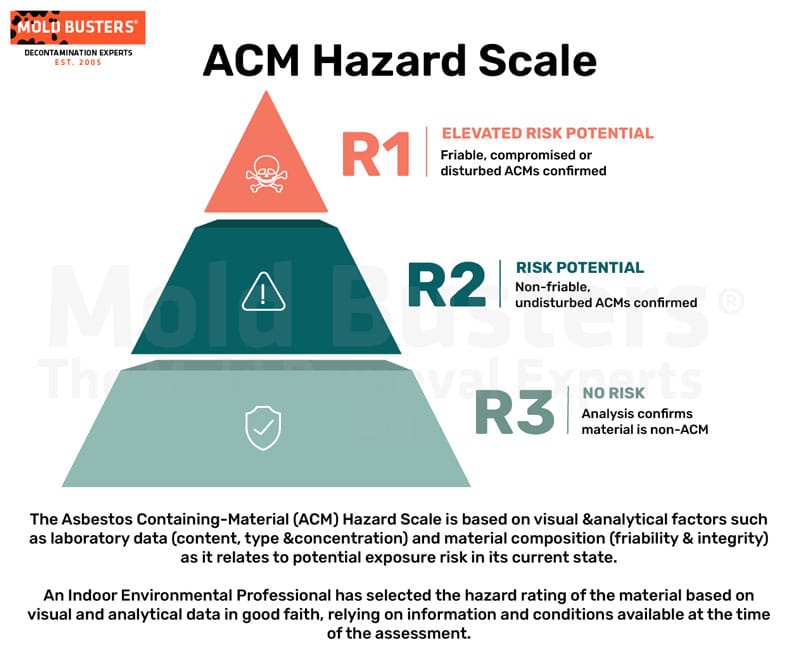
Typically, once a material has been sampled to determine whether it contains asbestos, our inspectors take note of a few key elements:
- Is the sampled material friable or non-friable?
- Is the sampled material compromised, disturbed or in a state of active demolition?
- Is the sampled material located in an active living space?
These factors play an important role in determining the risk potential to occupants residing within an indoor environment with confirmed asbestos-containing materials present.
All friable asbestos-containing materials, such as pipe insulation, heat register/duct wrap or vermiculite insulation, possess a higher risk potential if they are within an indoor space. Asbestos fibres become dislodged when the material is disturbed. Therefore, friable materials are at a higher risk of disturbance and are prone to degradation.
Non-friable asbestos-containing materials, such as plaster compounds, vinyl floor tile or cement heat shield materials, have a lower risk potential due to the fact that these materials are more difficult to disturb and thus less likely to release asbestos fibres into the air. This is where our indoor environmental inspectors assess the integrity of non-friable building material, searching for signs of compromise, water damage, or evidence of degradation.
All confirmed asbestos-containing materials possess a risk potential for the occupants of the dwelling. The Hazard Scale assists in determining the level of urgency in the response and implementation of asbestos abatement protocols. Although there exists a general rule that if “asbestos is left undisturbed, it’s not a problem”, this does not apply to friable or compromised ACMs.
The ACM Hazard Scale can be broken down into three primary risk potentials:

R3 is a NO RISK Potential due to the fact that the suspicious building material was found not to contain asbestos. This is typically confirmed through a bulk sampling process, where the material(s) is analyzed by an independent laboratory through a process called Polarized Light Microscopy (PLM).
The only way to conclusively know whether a material contains asbestos is through laboratory analysis. If the material does not contain any asbestos, it is deemed to be a safe material and can be removed by any competent individual.
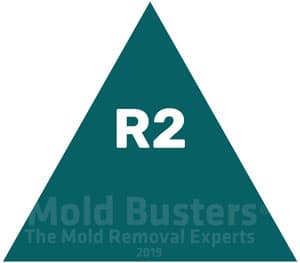
R2 is a RISK Potential and is labelled as such when a non-friable building material has been confirmed to contain asbestos but is found to be in good condition. If the confirmed non-friable ACM is not disturbed, not compromised, and in an area of the property where the potential for disturbance or compromise is low, an R2 value is given. It is recommended that this ACM be removed by trained professionals when the material is planned to be disturbed (e.g. during renovations or demolition).

R1 is an ELEVATED RISK Potential and is designated to any confirmed asbestos-containing materials that are friable or any non-friable material that is considered compromised or disturbed. When such a material is identified by one of our indoor environmental inspectors, immediate asbestos abatement is typically recommended. This is an automatic response especially in residential environments that are occupied.
Exposure to asbestos fibres can lead to serious and fatal consequences. It is important that a trained professional who understands the risks—for themselves and their clients—undertake any aspect of handling a potential hazardous material.
We strongly recommend that only trained professional be responsible for the collection of potential ACMs, and for any asbestos removal or abatement services. Additionally, it is our policy that encapsulation methods for abating confirmed asbestos materials be avoided, and that removal of such materials remain the most effective and viable option.
We also strongly advise indoor environmental professionals to consult our Residential Mold Removal Guidelines in order to be prepared for and properly handle ACMs during the remediation process.
What is asbestos abatement?
Asbestos abatement is the closing off or encapsulating an area to prevent asbestos exposure. This method has to be undertaken by well trained professionals.
Does a home inspector check for asbestos?
Unfortunately most home inspectors aren’t trained in inspection of asbestos within buildings, since samples need to be thoroughly tested within a laboratory. This is why it is best to have a sample tested by a trained professional.
Why is asbestos dangerous?
Asbestos has been classified as a known human carcinogen by the EPA, the International Agency for Research on Cancer and multiple other international organizations.
However, studies suggest that the different types of asbestos have different effects on health. For example, it may take less exposure to amphibole asbestos to cause mesothelioma than it would with chrysotile asbestos.
Even so, research has proven that exposure to chrysotile, the most commonly used type of asbestos, can lead to serious health conditions, such as increasing a person’s risk of developing asbestosis, lung cancer, mesothelioma, and other cancers.
How can a person get exposed to asbestos?
Most often, exposure occurs when a product that contains asbestos is disturbed, releasing tiny asbestos fibres into the air.
These fibres can be easily inhaled and get trapped in the lungs. Over time, they accumulate and cause scarring, inflammation of the lungs, breathing difficulties and cancer.
Symptoms don’t necessarily appear for approximately twenty years after exposure.
The most common immediate side effects are shortness of breath and tightness in your chest. It can take five to twenty years for a person to die from asbestos exposure after the symptoms develop.
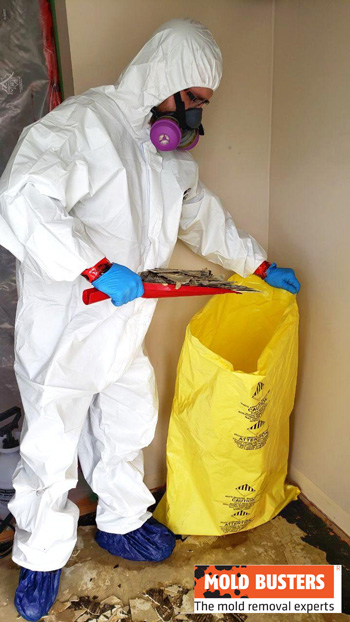
How long can asbestos fibres remain in the air?
Asbestos mineral fibres are untraceable to the eye and are extremely light. The fibres can remain within the air between 48 to 72 hours and do not evaporate in air or water. If a room has air currents the fibres can remain for much longer, and once it is airborne it can be swallowed or inhaled.
Is there a cure for asbestos exposure?
There is treatment for exposure to asbestos but there currently is no cure.
How can you dispose of asbestos – DIY?
Although everyone is entitled to remove asbestos on your own, we do not recommend this practice. Removing asbestos is an extremely dangerous job and should only be handled by a professional! You can still try remove it yourself, but again, that is certainly not recommended!
How much does it cost to remove asbestos?
Individual jobs on average can cost between $1500 – $3000 dollars for a 1500 square foot home, although prices may vary with each professional contractor.
What do you do if you suspect you have asbestos within your property?
The best possible solution would be to hire a professional contractor to run an asbestos test and have it immediately removed from your property.
When was asbestos banned in Canada?
While asbestos is banned in more than 50 countries (including the entire European Union), Canada finally banned asbestos as well, as of 30th of December, 2018. A likely reason to have such a long wait is the Canada’s 100-million-dollar asbestos industry, which has been around since the 1800s.
As such, Canada has one of the highest rates of mesothelioma cancer in the world. Experts say that about 2.1 out of every 100,000 Canadians are diagnosed each year with the aggressive disease.
If you have any further questions about asbestos use in Canada or if you are worried about asbestos in your home or office, contact Mold Busters and schedule an asbestos test today.

Get Special Gift: Industry-Standard Mold Removal Guidelines
Download the industry-standard guidelines that Mold Busters use in their own mold removal services, including news, tips and special offers:
Published: April 28, 2023 Updated: July 5, 2023

Written by:
John Ward
Account Executive
Mold Busters
Fact checked by:
Michael Golubev
CEO
Mold Busters

